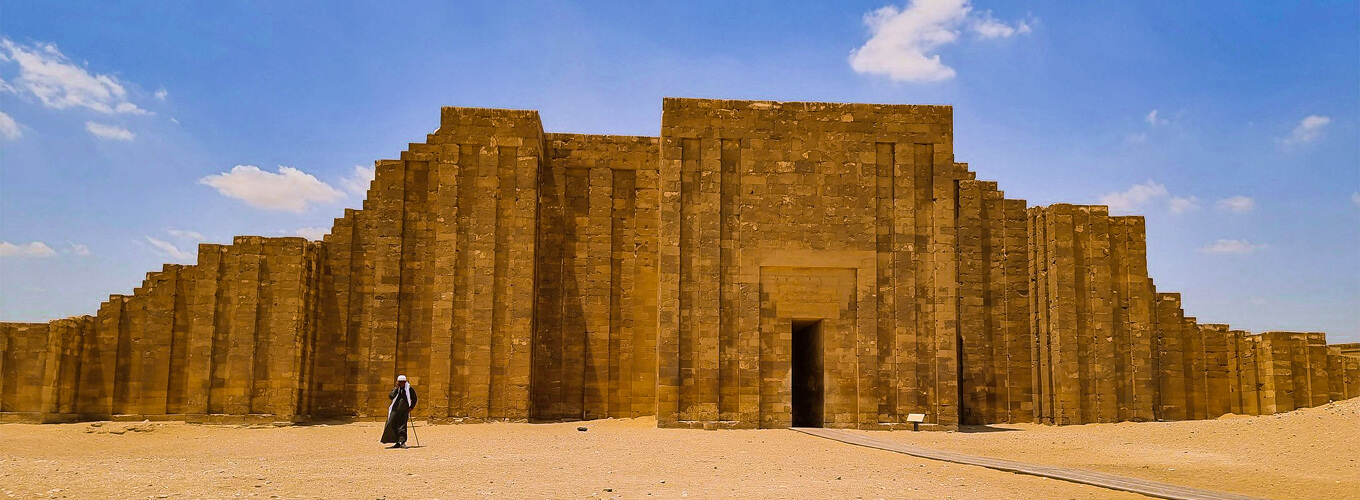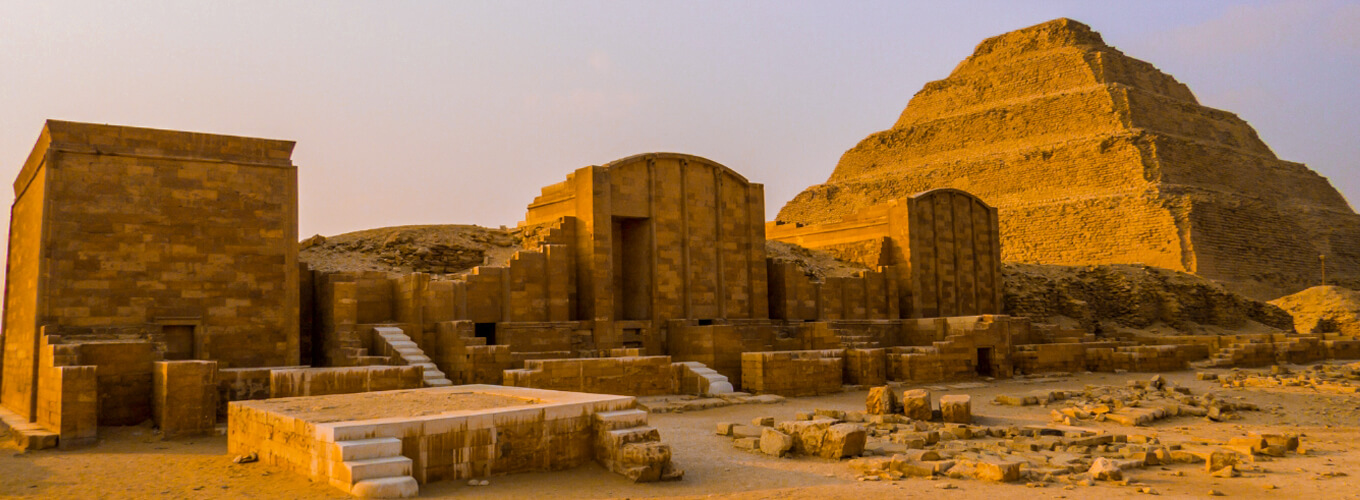Egypt in January offers travelers one of the most delightful experi...

The Necropolis of Saqqara is one of the most remarkable archaeological treasures in Egypt, stretching across the desert plateau just south of Cairo. Known as the ancient burial ground of Memphis, the first capital of Egypt, Saqqara holds monuments, tombs, and pyramids that span over 3,000 years of Egyptian history. For travelers planning to explore beyond the Great Pyramids of Giza, Saqqara provides an extraordinary journey into the evolution of tomb architecture, funerary practices, and the daily life of ancient Egyptians. This guide will help you understand its significance, what you can see, and how to make the most of your visit.
Saqqara is not just another archaeological site—it is the oldest royal burial ground in Egypt. As the cemetery of Memphis, it was used from the First Dynasty (around 3100 BCE) through the Greco-Roman period. Its vast desert plateau served as the final resting place for kings, nobles, high officials, and sacred animals, reflecting Egypt’s evolving beliefs about death and the afterlife.
The site is most famous for the Step Pyramid of Djoser, designed by the legendary architect Imhotep around 2650 BCE. This is considered the world’s first large-scale stone monument, marking a turning point in human history. Unlike earlier mud-brick mastabas, the Step Pyramid introduced stone construction, influencing the later pyramids at Giza.
Beyond Djoser’s pyramid, Saqqara’s history reveals an unbroken chain of religious and cultural development. Tombs from the Old Kingdom feature vivid reliefs of daily life, agriculture, and religious rituals. The Middle and New Kingdoms expanded Saqqara’s role, adding more elaborate tombs and burial shafts. By the Late Period, Saqqara became famous for its animal necropolises, where sacred bulls, cats, and ibis were mummified and buried as offerings to the gods.
For modern travelers, understanding Saqqara’s layered history adds depth to the visit. This is not a single monument but a living museum where centuries of Egyptian civilization overlap. Each section of the necropolis tells a different story, making it one of the most fascinating places to explore in Egypt.
Travelers visiting Saqqara will find far more than just the Step Pyramid. The necropolis covers a vast area filled with unique tombs, temples, and burial complexes. Here are some highlights not to miss:
Step Pyramid of Djoser: The centerpiece of Saqqara, this pyramid originally stood 62 meters high and was surrounded by a large ceremonial complex. Visitors today can enter restored sections and admire the ingenuity of Imhotep’s design.
Every monument in Saqqara offers something unique. Unlike Giza, where the focus is on monumental scale, Saqqara’s charm lies in its diversity of tombs, underground passages, and detailed carvings. Travelers with a love of history and archaeology often find Saqqara even more rewarding than Giza.

For travelers, visiting the Necropolis of Saqqara feels like stepping back into Egypt’s earliest dynasties. The site is less crowded than Giza, which makes the experience more personal and immersive. Many tours combine Saqqara with nearby attractions like Dahshur (home to the Bent Pyramid and Red Pyramid), creating a full-day excursion from Cairo.
Walking through Saqqara, you’ll notice how different sections reveal layers of history. Some tombs are open to the public with beautifully preserved reliefs, while others are accessible only by special permit. The Step Pyramid’s surrounding courtyard and ceremonial halls are particularly atmospheric, giving visitors a sense of ancient rituals performed here thousands of years ago.
Practical tips for travelers:
For travelers interested in Egyptology, Saqqara offers a more intimate connection with ancient culture compared to Giza. Instead of only admiring massive pyramids, you’ll be reading the stories carved into walls, entering underground chambers, and discovering lesser-known treasures that most visitors to Egypt never see.
Saqqara is located about 30 kilometers south of Cairo, making it an easy day trip from the capital. The site can be reached by car, private driver, or as part of an organized tour. Public transportation is limited, so most travelers prefer booking with a travel agency that includes transportation, entry tickets, and guiding services.
Tickets and Entry: A general entrance ticket gives access to major highlights, but some tombs and the Serapeum may require separate tickets. Prices vary, so checking the latest updates before your trip is recommended.
Suggested Itinerary:
Travel Tips:

The Necropolis of Saqqara is more than just an ancient burial site—it is a timeline of Egyptian civilization carved in stone. From the groundbreaking Step Pyramid of Djoser to the underground Serapeum, the necropolis captures the evolution of architecture, religion, and daily life over millennia. For travelers, it offers a quieter, richer experience than Giza, rewarding those who venture beyond the usual tourist path.
Visiting Saqqara is not only about seeing monuments but about walking through history. Every tomb, every inscription, every passage echoes with the stories of ancient Egyptians who shaped the world’s earliest civilization. If you are planning a trip to Egypt, make sure Saqqara is on your list—it will be one of the most memorable experiences of your journey.
We offer tours to Egypt’s most famous destinations such as the Pyramids and Sphinx in Giza, Karnak Temple and Luxor, Valley of the Kings, Sharm El Sheikh and Hurghada for beaches and diving, and Alexandria.
We provide organized tours, luxury hotel and resort bookings, comfortable transportation services, experienced tour guides, and activity ticket bookings such as diving, desert safaris, and Nile cruises.